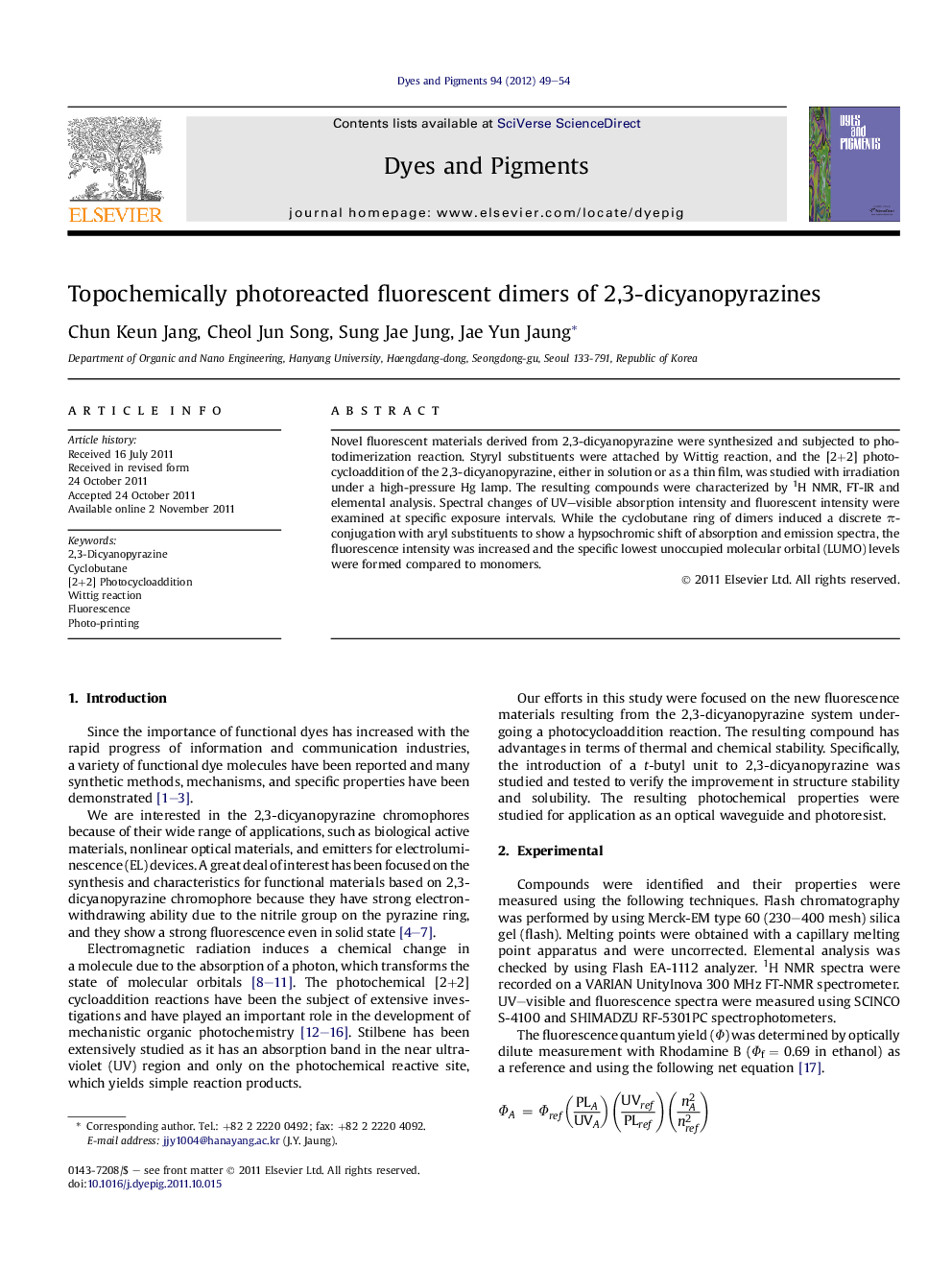| Article ID | Journal | Published Year | Pages | File Type |
|---|---|---|---|---|
| 176765 | Dyes and Pigments | 2012 | 6 Pages |
Novel fluorescent materials derived from 2,3-dicyanopyrazine were synthesized and subjected to photodimerization reaction. Styryl substituents were attached by Wittig reaction, and the [2+2] photocycloaddition of the 2,3-dicyanopyrazine, either in solution or as a thin film, was studied with irradiation under a high-pressure Hg lamp. The resulting compounds were characterized by 1H NMR, FT-IR and elemental analysis. Spectral changes of UV–visible absorption intensity and fluorescent intensity were examined at specific exposure intervals. While the cyclobutane ring of dimers induced a discrete π-conjugation with aryl substituents to show a hypsochromic shift of absorption and emission spectra, the fluorescence intensity was increased and the specific lowest unoccupied molecular orbital (LUMO) levels were formed compared to monomers.
► Synthesis 2,3-Dicyanopyrazines dimers by [2+2] photocycloaddition. ► Cyclobutane ring dimer which induce hypsochromic shift and increasing fluorescence intensity. ► Spin-coated thin film for negative photoresist application.
